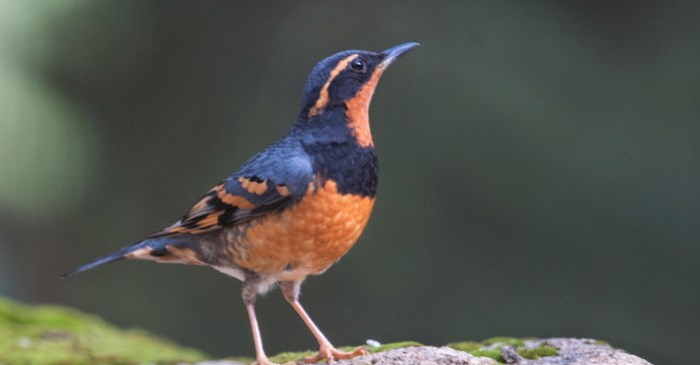Every so often, bird and habitat combine to create a beautiful environment. When you hear the Varied Thrush’s long, ethereal, trailing-off calls ringing through a redwood forest at sunrise or after a rainfall, the effect is quite haunting. (If you didn’t know better, you might wonder if aliens or mythical woodland creatures were gathering up nearby.)
Birds of the forest
These robin-sized birds are striking to look at, all decked out in orange and black plumage. In the summer months, they can be found mainly in the deep, vast mature forests of the Cascades, the northern Rocky Mountains and the Pacific Coast. They raise up to two broods a year in nests that are draped with moss, and forage for worms and insects. The color differences between the male and female are subtle - while a male has a bold black band to contrast the rusty-orange color across its chest, the female has more subtle brown-grey tones across it's chest and upper body.
They are seldom found in forests under 40 acres, and since the mid-1960s, logging and development have diminished the population of the Varied Thrush at a rate of 2.5 percent a year.
Winter dwellings
For the winter, the Varied Thrush may migrate a short distance to forage for nuts and berries, picking up and dragging old leaves to clear the ground. These otherwise solitary birds may even join flocks of American Robins to forage in backyards and parks. A small percentage will make the trip to the west coast of Mexico.
Welcome the Varied Thrush to your yard
If you’re lucky enough to live near the wintering grounds of these birds, plant berry-producing bushes and set out a ground feeder. We recommend Lyric Delite No Waste Mix, which is filled with the seeds and nuts these colorful birds crave.
